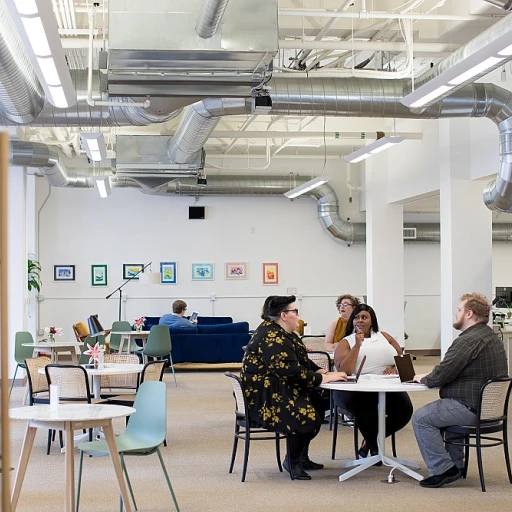
Understanding the Importance of Live Feedback
The Benefits of Live Feedback for Employee Engagement
In today's fast-paced work environment, effective feedback has become vital for employee engagement and performance management. Implementing a real-time feedback system can help foster a culture of open communication and continuous development. Live feedback offers numerous advantages, not just for individual employee growth but also for team dynamics and overall organizational health. Providing specific and constructive feedback in a timely manner can significantly influence positive behavior changes and performance improvements. It enables employees to adjust their approaches in real time, leading to more immediate results and a more engaged workforce. A critical aspect of live feedback is its influence on employee development. When team members receive consistent and specific performance feedback, they're more likely to invest in skill development and strive for professional growth. This ongoing process supports a proactive approach to learning, benefiting both the employee and the organization. Furthermore, integrating positive feedback alongside constructive feedback examples can bolster employee morale and motivation. Praise for specific behavior, paired with constructive criticism, helps employees feel valued and appreciated while also identifying areas for improvement. This balance ensures a supportive atmosphere, promoting trust and respect among team members. Encouraging peer feedback can also address different types of feedback, enhancing team collaboration and fostering a sense of community within the workplace. When employees regularly share performance feedback, they build stronger relationships and create a supportive environment conducive to growth and success. To learn more about affordable ways to boost employee engagement, consider exploring affordable ways to boost employee engagement. This resource provides additional insights on how live feedback and employee engagement strategies can work together to create a thriving workplace.Real-Time Feedback Tools and Technologies
Leveraging Innovative Tools for Real-Time Insights
Integrating real-time feedback tools and technologies into workplace practices is crucial for improving employee performance and fostering positive work environments. These tools are designed to provide immediate insights into specific behavior, enabling managers to address both positive and negative feedback in an effective manner. With advancements in technology, businesses can now implement various solutions that cater to these needs. One effective way is through performance management software that prioritizes employee engagement and development. These tools often allow for peer feedback and provide specific examples of employee behavior, which can be incredibly valuable in setting performance expectations. By addressing behaviors as they occur, team members can benefit from constructive feedback that encourages growth and skill enhancement. Here’s a look at some technologies that can help:- Real-Time Communication Platforms: These platforms facilitate open lines of communication among employees, making it easier to provide immediate feedback and positive reinforcement. They foster an environment where feedback is shared freely, thus promoting continuous improvement.
- Performance Tracking Applications: With these applications, managers can track and provide instant feedback on employee performance, offering employees concrete examples of what is working well and areas for improvement.
- 360-Degree Feedback Tools: By using these tools, organizations can ensure that feedback is gathered from various sources, including peers and supervisors, which helps create a more rounded view of an employee’s capabilities.
- Employee Recognition Software: This type of software focuses on acknowledging positive contributions and behaviors, highlighting examples of excellence which can motivate team members and improve morale.
Implementing Live Feedback in Team Meetings
Running Impactful Team Discussions
Incorporating live feedback into team meetings can transform the dynamics of workplace communication and significantly enhance performance management. By facilitating an environment where team members can freely exchange both positive feedback and constructive criticism, you nurture trust and improve employee engagement. To make feedback delivery in team meetings effective, consider the following approaches:- Set Clear Objectives: Clearly outline the purpose of the feedback session. It helps employees feel more prepared and willing to engage in constructive feedback. Define what specific behavior or performance metrics you'll focus on and provide examples.
- Encourage Peer Feedback: Foster a culture where peer feedback is celebrated. When team members offer insights into each other’s work, it promotes development and growth. Ensure that feedback examples are constructive and aimed at helping improve skills.
- Balance Positive and Constructive Feedback: An effective meeting should include a mix of encouragement and opportunities for improvement. Balancing positive feedback with constructive criticism ensures that employees feel valued while understanding areas for development.
- Create a Safe Space for Open Communication: Encourage open and honest feedback by creating a safe environment. Employees should feel comfortable to share specific examples without the fear of negative repercussions.
- Utilize Real-Time Feedback Tools: Employ tools that capture feedback during meetings for real-time analysis and discussion. Look for technologies that support seamless integration into regular work processes.
Training Managers for Effective Feedback Delivery
Empowering Managers for Constructive Conversations
Developing managers' skills to deliver effective feedback is a crucial step in enhancing employee performance and retention. Training programs should focus on equipping managers with the necessary tools to provide feedback that is both constructive and specific. This not only addresses immediate performance issues but also contributes to the long-term growth and development of team members. To ensure feedback is constructive, managers need to:- Understand the Types of Feedback: Distinguish between positive feedback, which reinforces good behaviors, and constructive feedback, which should guide employees towards improvement without causing discouragement.
- Use Specific Examples: Instead of vague critiques, provide concrete instances of specific behavior to help the employee understand what is being discussed. This makes feedback more actionable and relatable to their work experience.
- Practice Active Listening: Engage employees in a two-way conversation. Listening to an employee’s perspective can transform the feedback process into a more inclusive and collaborative discussion.
Creating a Culture of Open Communication
Nurturing Transparency and Inclusiveness in Communication
Developing a culture of open communication is pivotal for effective feedback within any workplace. To foster this environment, leaders must first encourage employees to exchange thoughts and concerns openly by promoting transparency. Demonstrating transparency in decision-making processes helps to build trust and assurance among team members.
Positive feedback, when given promptly, reinforces desired behaviors and encourages development. By sharing specific examples of constructive feedback, managers can address areas of improvement without dampening morale. Employees feel valued and more committed to their roles when they receive recognition for their contributions and development opportunities are highlighted.
Encouraging Peer Interaction and Collaboration
Facilitating peer feedback is another way to embed a culture of open communication, ensuring diverse perspectives and team engagement. Employees benefit from evaluations that encompass different viewpoints, which enhance their understanding of how their behavior impacts team dynamics.
While some individuals may initially hesitate to provide feedback, reinforcing the importance of honesty and respect in communication can alleviate tensions. Employees are more likely to embrace feedback when they see it leading to tangible growth, improved performance, and team cohesion.
Ensuring Consistent Feedback Mechanisms
Consistency in providing various types of feedback, such as performance reviews and ongoing performance feedback, contributes to the culture of continuous improvement. Regular feedback sessions create opportunities for managers and employees to clarify expectations, setting clear milestones for employee performance and career progression.
Feedback examples, both positive and constructive, must be clearly articulated. When discussing specific behavior and its impacts, employees can better associate their actions with the outcomes. Committed leaders should routinely model these practices, highlighting the constructive feedback process as a norm rather than an exception.
Measuring the Impact of Live Feedback on Employee Retention
Assessing the Outcomes of Real-Time Feedback
To effectively measure the impact of live feedback on employee retention, it is crucial to evaluate how feedback influences various aspects of performance and engagement. By understanding these correlations, organizations can make informed decisions about continuing or adapting their feedback strategies.
Real-time feedback can lead to several positive outcomes:
- Enhancing Employee Performance: Constructive feedback helps employees pinpoint areas of improvement and identify specific behaviors that need adjustment. This enables team members to make targeted changes that contribute to overall performance growth.
- Boosting Employee Engagement: When employees receive specific and actionable feedback, it fosters a sense of ownership over their work and development. Positive feedback examples can significantly boost morale, making employees feel valued and engaged.
- Encouraging Skill Development: Frequent feedback encourages continuous learning and skill advancement. Constructive feedback allows employees to explore new ways to improve, while positive reinforcement supports ongoing development.
- Promoting a Culture of Open Communication: When feedback is delivered consistently and effectively, it cultivates an environment where open dialogues are encouraged. This atmosphere reduces the apprehension surrounding constructive feedback, making employees more receptive.
By monitoring these outcomes through performance reviews and peer feedback sessions, organizations can gather qualitative and quantitative data that underscore the effectiveness of their feedback mechanisms. Analyzing these metrics offers insights into how live feedback not only supports performance management but also plays a pivotal role in employee retention by ensuring that employees feel heard, valued, and motivated to excel in their roles.












